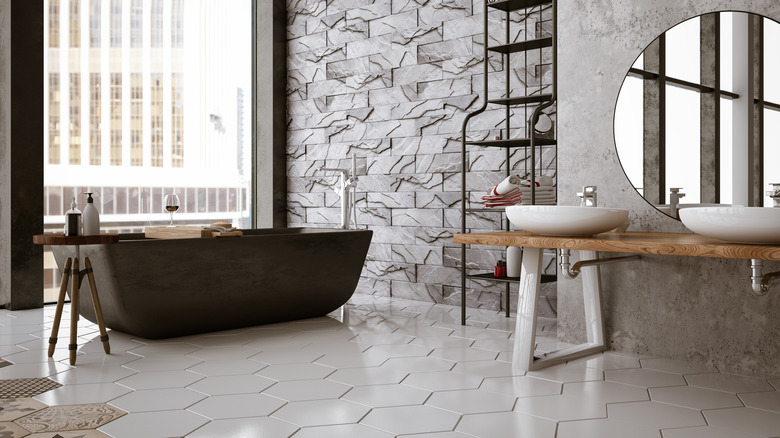What To Consider Before Installing Floating Tile Floors
Floor renovations can be expensive, especially if you opt for a professional installation. Moreover, the process can also take a while if you need to rip out the old flooring and start fresh. However, floating tiles are a relatively new concept that makes it easier for homeowners to change the look of their floors without help from a professional. Floating tiles are available in a range of colors and designs and the term refers more to the installation process as opposed to the materials used. It is imperative that your existing floor is in good condition before they are installed, as too much movement can lead to a damaged or cracked floor.
These flooring systems have a click-lock installation procedure that allows them to snap together — the floating tiles aren't attached to the subfloor with mortar like standard tiles, instead, there's a thin layer of air between the two. Since you don't need a professional to do the installation, it's become a popular way for homeowners to quickly change the look of their space, and offers several advantages.
You'll always have an even floor
Since the tiles are joined together with a click-lock system, you'll be able to connect them evenly across the existing floor, creating a perfectly even surface. You can place them over most types of existing floor coverings, like laminate, vinyl, concrete, and linoleum, or you can situate them directly over the subfloor. While it isn't necessary to use adhesive, mortar, or glue to secure the tiles, you'll still need to use grout between them to prevent any movements that could occur as you walk on them, and to make them watertight.
As an additional bonus, if you ever need to repair your floating tiles, you can simply replace any damaged ones with new ones. Of course, you will need to remove the surrounding tiles from the wall to get to the broken tile, but it's more straightforward — for standard tile, you'd have to hire another professional with power tools to remove and install a new tile, which could leave you with an uneven or mismatched floor. You can also replace the whole floor with a new style by popping them all out and installing new ones.
Floating tiles can be expensive
While floating tiles create a sleek look, they are prone to cracks, especially if there's heavy pressure put on them. For this reason, it is important to make sure that your subfloor is in good condition and doesn't bounce when walked on. In addition, it is best to avoid installing floating tiles under heavy appliances, like the fridge or stove, to prevent damaging them. Instead, use plywood and linoleum under those spaces.
Installing floating tiles can also be an expensive project. There aren't too many manufacturers that make floating tile systems, so there are limited quantities, and you also have fewer colors and styles to choose from. Floating tiles average between $15 to $18 per square foot, whereas standard tiles cost between $1.50 and $10 per square foot. Moreover, professional floor experts will generally charge around $5 to $8 per square foot for the installation.


